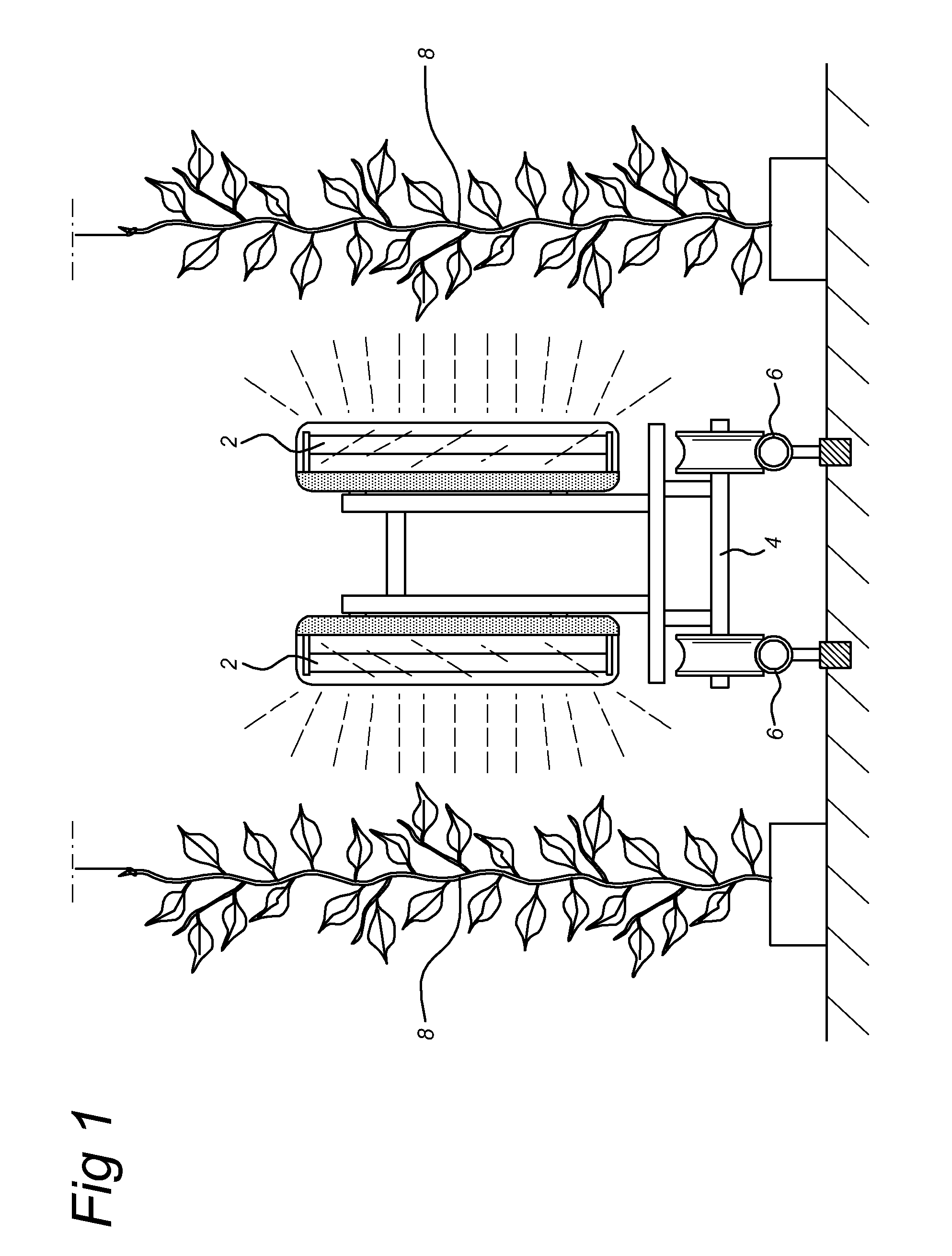Methods for Treating Live Plants or Live Plant Parts or Mushrooms with UV-C Light
- Summary
- Abstract
- Description
- Claims
- Application Information
AI Technical Summary
Benefits of technology
Problems solved by technology
Method used
Image
Examples
example 1
Control of Botrytis on Tomato Plants
[0109]Tomato plants are grown in rows in a greenhouse. An apparatus comprising two UV-C lamps, one on either side of the front end of the apparatus is placed onto rails (e.g. heating pipes) between some of the rows, at a height which brings the UV-C light into contact with about ⅔ of the stem.
[0110]The amount of Botrytis cinerea mycelium present on the surface of the stems is assessed at regular intervals, both in the UV-C treated plants and in the control plants. The assessment enables to find the optimal UV-C dosage to damage the Botrytis and to improve the productivity of the treated plant.
[0111]By treating a tomato periodically, the Botrytis growth is reduced, which postpones or prevents the instant that the Botrytis completely surrounds the stem of the tomato and thus increases the tomatoes duration of life and yield.
example 2
Reducing Germination of Sporangia of Phytophthora infestans
[0112]The effect of UV-C dose rate on the germination of P. infestans sporangia was assessed on water agar. P. infestans sporangia were plated on 1% water agar and exposed to different dosages of UV-C. Germination was determined for 100 sporangia per plate. Four replicates were included for each dose rate.
[0113]The results are shown in FIG. 3. Data points represent averages of four replicate plates. The experiment was replicated. Solid dots represent data from experiment 1 and open dots represent data from experiment 2. Error bars represent standard deviation.
[0114]The results show that the viability of P. infestans reproductive structures can be significantly reduced using UV-C light. The percentage of germination was reduced by at least 80% using about 6-10 mJ / cm2 UV-C.
PUM
 Login to View More
Login to View More Abstract
Description
Claims
Application Information
 Login to View More
Login to View More - R&D
- Intellectual Property
- Life Sciences
- Materials
- Tech Scout
- Unparalleled Data Quality
- Higher Quality Content
- 60% Fewer Hallucinations
Browse by: Latest US Patents, China's latest patents, Technical Efficacy Thesaurus, Application Domain, Technology Topic, Popular Technical Reports.
© 2025 PatSnap. All rights reserved.Legal|Privacy policy|Modern Slavery Act Transparency Statement|Sitemap|About US| Contact US: help@patsnap.com



